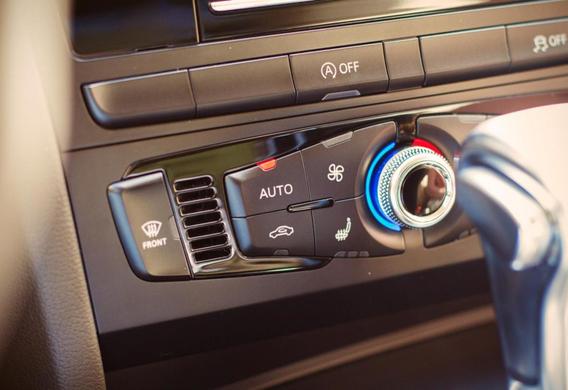
Seating warm-up is an option that exists in almost all modern cars. The system is a special electrical device that is most often integrated into the front seats and fed from the vehicle's side network.
Among the motorists there was a joke that the first driver, who had tried to heat the seats, was a fabulous Yemelis with his self-propelled stove
This option is particularly relevant for cars with leather interior, as during the cold time of year the skin is warming outside very slowly and the cold can affect the health of the driver and passenger.
History of the introduction of heated seats in motor vehicles
Among the Russian motorists, there is a joke that the first driver, who tried to heat the seats, was a fabulous Yemelis with his self-propelled liver. If we are serious, there are still disputes over the invention of a heated seat in the car world. Some sources claim that the Americans were the first to come up with this idea: in 1955, Robert Ballard received the patent, and in 1965 it was offered for the Cadillac Fleetwood model. The vision of this car was made of carbon fabric.
Several times heated seats were included in the lists of the most important and useful inventions of the world automotive industry, along with turbocharged and seat belts
According to another version, the heating of seats for the first time was invented in cold Sweden by Saab specialists and was offered for the leather salon of Saab 99, 1972.

In any case, the world's leading automakers have been offering their customers a heated front seat for several decades. Several times this option has been included in the lists of the most important and useful inventions of the world automotive industry, along with turbocharged and seatbelts. Seat warm-up in modern vehicles
Seat warm-up in modern vehicles
In fact, the heated seats in modern vehicles can be heated in two ways: heating elements may be integrated into the seat or on top of the bench.
Inclet is a simple and budgetary option for vehicles in which seats are not originally heated. A heater element, embroidy in a special fabric, is mounted with a rubber band or hooks and plugs into the cigarette lighter. However, in the driving of a rider, it may be possible to cause discomfort to the driver and to the passenger. In addition, the average service life of most such "heaters" does not exceed one or two seasons. In addition, there may be some inconvenience to the permanently occupied nest of the cigarette lighter.
Built-in heating is quite simple: the heating element (most often it with teflon coated and nitromatic spiral) is embedded in the fabric (carbon or thermal fiber) and is connected to the vehicle's tail power. The whole structure shall be placed in the back and the lower part of the seat. When activated, the heating element first reaches a certain temperature (usually 35-40 degrees), and then the device supports a comfortable thermal mode. To prevent overheating, the system includes a thermal sensor. In addition, some vehicles may choose to heat the heat, or to turn off one of the parts so that only the back is heated or the lower part of the seat is heated.
European and American insurance companies, when issuing a medical policy, are introducing increasing coefficienty for those customers who do not have heating seats in their cars
Inline heating can be installed both in the car assembly plant and later in the workshop at the driver's request.
Warm-up of the seats: use or harm?
Since its inception, a proliferation of seats has been controversial. On the one hand, it is difficult to underestimate the usefulness of this option: sitting in the winter on a cold leather seat is as "useful" and "pleasant" as, say, a stone parapet. At least a common cold, and at most, kidney and reproductive disorders are guaranteed. To maintain the health of the driver and passengers, a heated seat warm-up shall be established.
By the way, many European and American insurance companies, when issuing a medical policy, are introducing increasing coefficienty for customers who do not have this option because they are likely to catch up or earn chronic diseases higher.
However, medics say that the heating of the seats may have a negative effect on health. The use of heating is too active to be dangerous to male health and may lead to impotence and infertility. In this regard, the specialists recommend less to use heating, especially if it is not about leather, but about the fabric saloon: this coating will heat the warm person in a very fast way. Some automakers, taking care of the health of the customers, offer an additional option-a special sensor that will force the heating of seats to be switched off after a certain amount of time.
Cooling of seats
With the invention of the heating of seats engineering thought began to work in the opposite direction-above the cooling surface of the seats. Today, this option is also offered for some machines (mostly these are luxury models like Audi A8, Cadillac DTS, Maserati 57, and 62, etc.), but they do not enjoy the high demand as heating.
Seating cooling can be done in two ways: through the air circulation (chilled or not) through the seat material or by the use of a cooling unit (usually air-conditioners).







